Young plant qualities
What we do: the latest on propagation
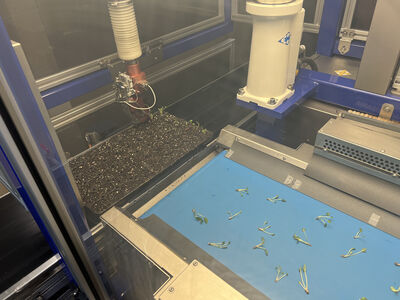
Perhaps you also wonder from time to time what exactly the people at Lubera Edibles do every day. Do they do anything with in vitro propagation? But do they also sow seeds, take cuttings and wood cuttings? The short answer is yes, but...
In vitro propagation is still the main tool for propagating high-quality young plants. Why and what exactly we do will be explained below.
Read moreFruit tree young plants from Lubera Edibles - The new Treelings®
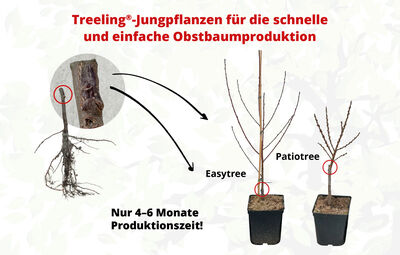
We can offer a few fruit tree species, such as cherries, as ungrafted young plants. But for most fruit trees this is still not possible or leads to a juvenile and infertile phase of the young trees that is too long. However, which young plants are available to producers of container plant products who wish to grow fruit trees in pots? And what should this fruit tree young plant product look like so that it is easy to process and allows a relatively short production period?
Read moreThe advantage of late potting
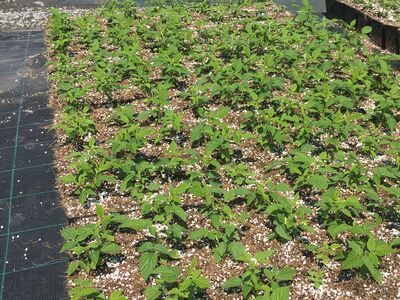
Even if the actual potting phase/season for soft fruit is already over in early summer, there is still the possibility of increasing the production again in the second half of the summer and filling production gaps in the event of unforeseen demand, a good market situation during the summer and good sales in late summer. Our young plant delivery window in the second half of August makes this possible. Now that the sometimes-extreme midsummer weather conditions have been overcome, it makes sense...
Read moreWasabi young plants – Japanese horseradish
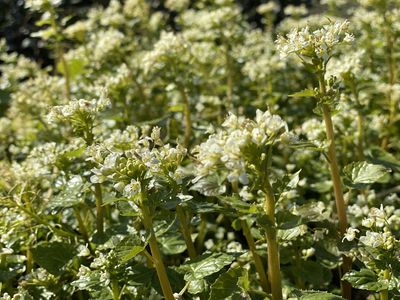
The true wasabi plant (Eutrema japonica), also called Japanese horseradish, is a rare vegetable or spice plant that originated in Japan but is now cultivated worldwide. Everyone who regularly enjoys sushi is familiar with this green, spicy paste that brings tears to the eyes and is often touted as wasabi paste in Europe. But now the frightening truth: if at all, such pastes only include wasabi in the lower single-digit percentage range. The main ingredient is predominantly ordinary horseradish...
Read moreKiwiberry® – the latest generation of hardy kiwi young plants

When you hear the word 'kiwi', you almost inevitably think of the large, green-brown, hairy fruits from the supermarket, which are now available all year round. It doesn't matter whether it's the green- or yellow-fleshed variety. Both look quite similar at first glance.
Our range of hardy kiwi young plants, on the other hand, has a much greater variety of shapes and colours. In the portrait article on hardy kiwis we have already acquainted you to this equally fascinating and easy-to-grow group of...
Read moreThe standard berry and its alternatives
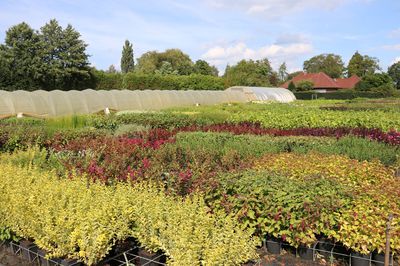
The 2 to 3 litre pot, tall and usually square, has become the standard in berry plant production. If you wander through the garden centres in the spring and analyse the offers with a gardener's eye, all you see is always the same: almost the same pot, with a slightly different but always large label, nota bene with as little information as possible. It is a well-known fact that customers cannot read. At least that's what our advertising consultants seem to think. Garden centres are no better. I...
Read moreStrawberry young plants in many extraordinary varieties - exclusively at Lubera Edibles®
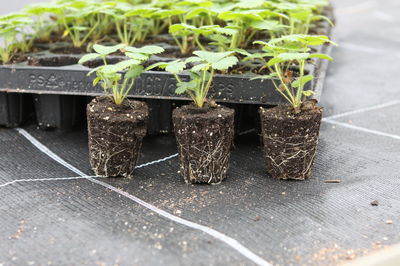
Strawberry young plants - this WAS a gaping hole in our berry young plant range. Historically, strawberry plants have mostly been produced by specialist growers (usually from commercial farming). But our aim is to enable many more growers to produce their own strawberry plants to complement their edibles (vegetables, fruit, other berries) by providing the right quality of young plants. And at the same time, of course, we would like to offer varieties that meet the special needs of home garden...
Read moreCitrus plant production with Switrus® and Citrobella® young plants
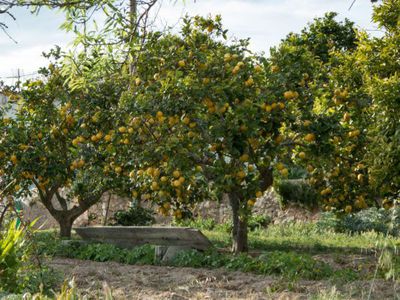
The incredible diversity of the different Citrus species and the sheer endless number of varieties are simply impressive. From the original Citrus species C. aurantifolia (limes), C. maxima (grapefruit), C. medica (citron), C. reticulata (mandarin orange), the species and varieties known today have developed over several generations of mankind. Most people who hear the name 'citrus' may first think of the lemons and oranges that we know mainly from the winter months.
From now on, we want to make...
Read moreLubera® Citrobella® - the simple citrus assortment for container cultivation – robust, but not hardy

In addition to the hardy lemons, we have also decided to include non-hardy but nevertheless cold-tolerant lemon varieties or species in the range. These lemons are cultivated in the home garden as classic container plants and require a cool but frost-free and bright location for overwintering, as they are also evergreen plants. As already described at the beginning, these varieties/species also have a certain tolerance to slightly negative temperatures. For the hobby gardener, this means that...
Read moreSwitrus® – The hardy citrus young plants!
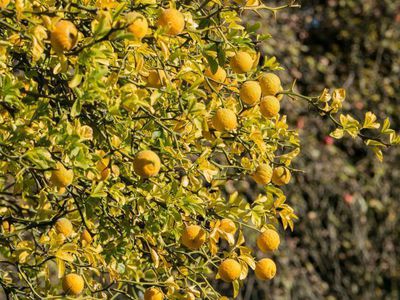
There is hardly any other plant that reflects the Mediterranean attitude to life as strongly as the lemon and citrus plants in general. Just think of the Amalfi lemons that grow along the Italian coast of the same name. If you also want to enjoy lemon plants north of the Alps, you have few options. On the one hand, you have to visit a botanical garden or grow your own container plants in your garden, with all the burdens and worries that it entails. For example, the correct and frost-free...
Read more